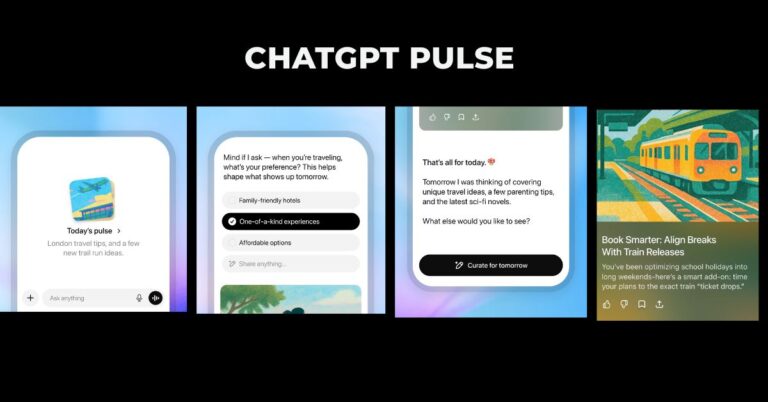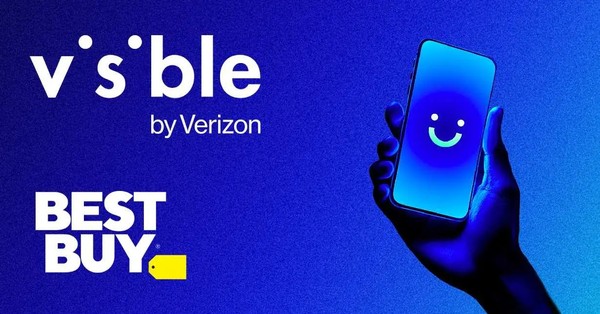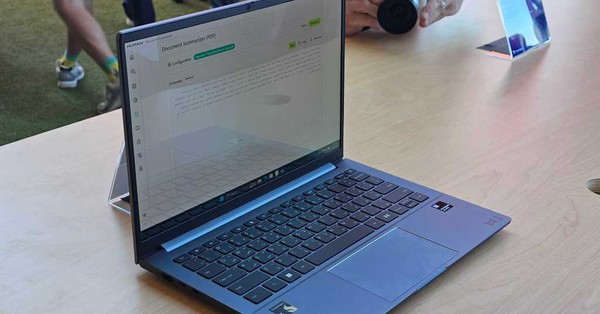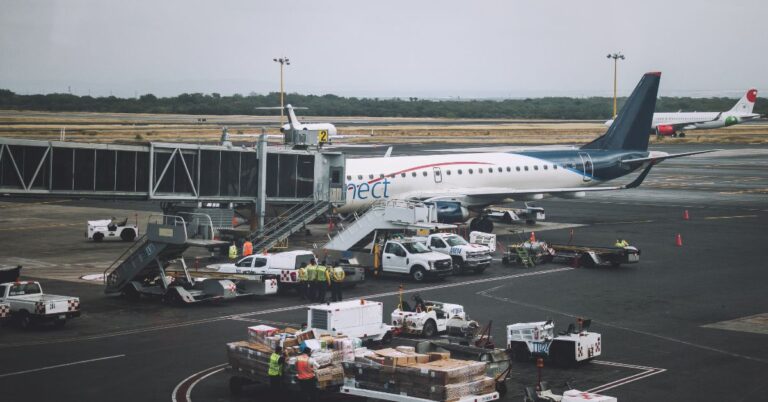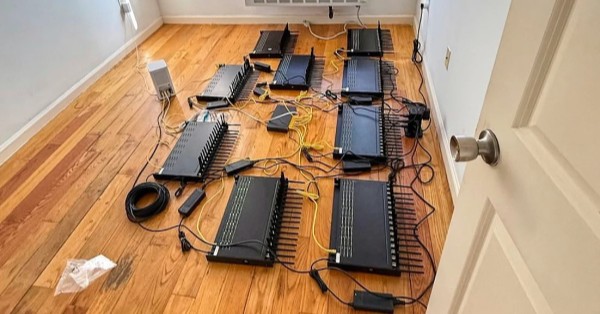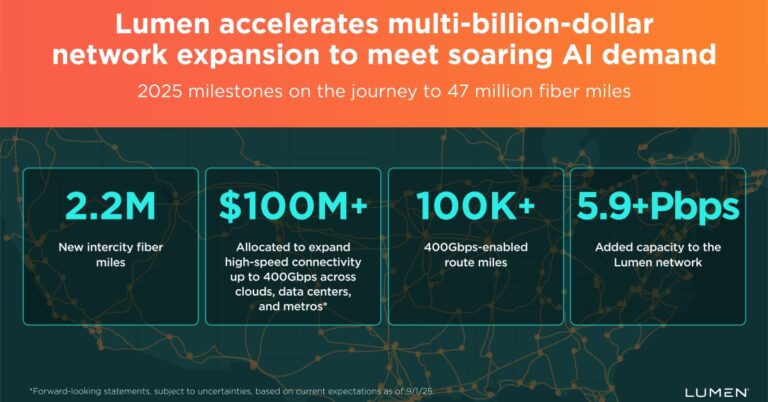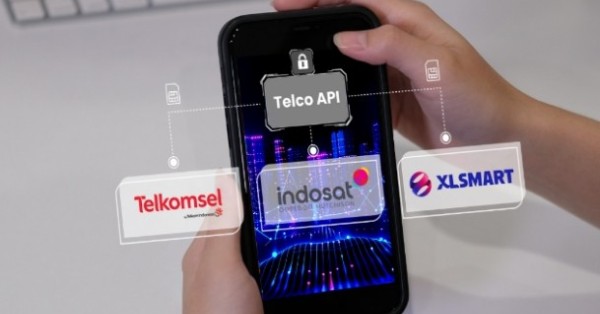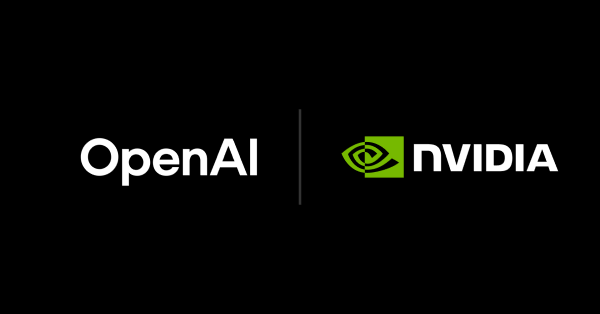Tech News & Insight
OpenAI introduced ChatGPT Pulse, a new capability that assembles personalized morning briefs and agendas without a prompt, indicating a clear shift from reactive chat to proactive, task-oriented assistance. Pulse generates five to ten concise reports while you sleep, then packages them as interactive cards inside ChatGPT. Each card contains an AI-generated summary with source links, and users can drill down, ask follow-up questions, or request new briefs. Beyond public web content, Pulse can tap ChatGPT Connectors, such as Gmail and Google Calendar -to highlight priority emails, synthesize threads, and build agendas from upcoming events. If ChatGPT memory is enabled, Pulse weaves in user preferences and past context to tailor briefs.
Tech News & Insight
Verizon’s digital sub-brand Visible is extending from app-only to omnichannel, adding BestBuy.com today and a nationwide in-store rollout on September 28. Visible offers unlimited data, talk, and text on Verizon’s 5G-capable network, plus unlimited mobile hotspot and no annual contracts. Customers keep the app-led experience – account setup, activation, billing, and support, while gaining retail conveniences like immediate SIM pickup, device compatibility checks, and help from trained associates. The Best Buy partnership signals a broader shift toward hybrid digital-retail engagement in U.S. wireless. Retail staff can guide eSIM setup and BYOD compatibility using GSMA eSIM standards and device tools, shortening time-to-service.
Tech News & Insight
Telecom operators face rising costs and risks when network data can’t be trusted. From ghost circuits and delayed service activations to compliance issues and poor investment decisions, the impact is felt across every team. This article looks at why accurate data matters more than ever and how operators can build lasting trust with their network records.
Tech News & Insight
HUMAIN, a Saudi PIF-backed AI company, introduced Horizon Pro, an “agentic AI” PC built on Qualcomm’s Snapdragon X Elite, positioning it as a new class of Windows laptop where on-device AI drives workflows, decisions, and user interaction. At Qualcomm’s Snapdragon Summit in Maui, HUMAIN CEO Tareq Amin unveiled the Horizon Pro PC and the company’s agentic software layer, Humain One, which runs on top of Windows 11 and is slated for formal launch at the Future Investment Initiative in Riyadh.
Tech News & Insight
OpenAI plans five new US data centers under the Stargate umbrella, pushing the initiative’s planned capacity to nearly 7 gigawatts—roughly equivalent to several utility-scale power plants. Three sites—Shackelford County, Texas; Doña Ana County, New Mexico; and an undisclosed Midwest location—will be developed with Oracle following their previously disclosed agreement to add up to 4.5 GW of US capacity on top of the Abilene, Texas flagship. Two additional sites in Lordstown, Ohio and Milam County, Texas will be developed with SB Energy, SoftBank’s renewables and storage arm. OpenAI also expects to expand Abilene by approximately 600 MW, with the broader program claiming tens of thousands of onsite construction jobs, though ongoing operations will need far fewer staff once live.
Tech News & Insight
Alibaba Cloud is integrating Nvidia’s Physical AI toolchain into its Cloud Platform for AI, bringing robotics-grade simulation, training, and deployment capabilities to customers. Alibaba and Nvidia unveiled a partnership that embeds Nvidia’s embodied AI development tools directly into Alibaba’s machine learning platform. The integration targets robotics, autonomous driving, and “connected spaces” such as warehouses and factories. Physical AI refers to software that models the real world in 3D, generates synthetic data, and trains control policies with reinforcement learning before deploying to physical systems. Developers on Alibaba Cloud gain access to toolchains for data processing, simulation-based training, and real-world reinforcement learning.
Tech News & Insight
Google Labs has launched Mixboard, an AI-powered concepting board that turns text prompts and images into editable visual mood boards now available in U.S. public beta. Mixboard gives users an open canvas to generate, arrange, and iterate on visual ideas, from home decor and event themes to product inspiration and DIY projects. You can start from a text prompt or prebuilt boards, pull in your own images, create new visuals with generative AI, and refine them using natural-language edits. Mixboard signals how fast multimodal AI is moving from chat to visual ideation, with implications for search, commerce, and collaborative workflows.
Tech News & Insight
Connectivity is transforming aviation from the ground up. Airports are deploying private 5G, Wi-Fi 6, edge computing, and IoT to deliver two major outcomes: smoother passenger experiences and lower operating costs. Travelers enjoy real-time updates, biometric check-in, and AR wayfinding — while operators benefit from predictive maintenance, smarter gate usage, and energy optimization. This dual-value framework positions connectivity as more than infrastructure, it’s a strategic differentiator that enhances revenue, reduces OPEX, and elevates the brand.
Tech News & Insight
Aviation is no longer a siloed industry – it’s a globally connected ecosystem where airports, airlines, regulators, telecom operators, and tech vendors must work in sync. As digital transformation accelerates, connectivity becomes a critical layer for collaboration, enabling real-time decision-making, safety, operational alignment, and a seamless passenger experience.
From private 5G and edge computing to biometric boarding and IoT, the aviation industry must co-invest, co-develop, and co-govern digital infrastructure. Case studies from Heathrow, Changi, and DFW show that stakeholder alignment leads to measurable gains in efficiency, innovation, and trust. Connectivity is the enabler, but collaboration is what makes it scalable and sustainable.
Tech News & Insight
Airport ground operations — from baggage handling and fueling to aircraft turnaround – are undergoing rapid digital transformation. Powered by IoT, automation, private 5G, and edge computing, airside workflows are becoming more predictive, efficient, and sustainable. Sensors track assets, optimize vehicle dispatch, and enhance worker safety. Autonomous tugs, computer vision, and AI-driven maintenance cut delays and reduce manual errors. Private networks and edge computing provide the real-time connectivity needed for mission-critical applications. Leading airports like Schiphol, Changi, and DFW are already adopting these technologies, proving that digital transformation on the ground isn’t just possible, it’s essential for next-gen airport performance.
Tech News & Insight
Airports are shifting from physical-first to connectivity-first infrastructure. Legacy systems are no longer enough to manage modern expectations for speed, safety, and digital experience. Leading airports are deploying Wi-Fi 6, 5G, private mobile networks, and edge computing — not as standalone upgrades but as a hybrid network foundation. Each technology serves a purpose: Wi-Fi 6 supports high-density passenger areas; public 5G offers mobile bandwidth for travelers; private networks ensure operational reliability; and edge computing enables real-time decision-making. Together, they form a resilient architecture built for scalability, cybersecurity, and future growth.
Airports like Heathrow, Changi, and DFW are already implementing these layers, proving that connectivity is now core infrastructure, just like runways or terminals.
Tech News & Insight
Airport terminals are evolving into connected, intelligent environments powered by biometrics, IoT, and scalable infrastructure. These technologies are helping airports manage increasing passenger volumes, improve security, and deliver seamless experiences. From facial recognition at check-in to IoT-based baggage tracking and AR navigation, the connected terminal offers faster processing, predictive safety, and energy-efficient operations. Scalable, cloud-native systems future-proof infrastructure for demand surges and enable rapid integration of emerging tech like AI, digital twins, and virtual queuing. As global air travel rebounds, the connected terminal represents a blueprint for smarter, safer, and more sustainable airport growth.
Tech News & Insight
Airports are no longer just transit points – they’re evolving into intelligent, connected environments powered by AI, private 5G, and digital twins. These technologies enable predictive maintenance, real-time baggage tracking, and biometric check-ins, while optimizing operational efficiency and sustainability. Private 5G ensures low-latency, high-reliability communication across airport systems, from autonomous luggage handling to AR-powered passenger navigation. Digital twins create real-time simulations of airport environments, helping operators plan, respond, and allocate resources more effectively. This digital transformation is redefining how passengers experience travel — with less stress, fewer delays, and more personalization, while equipping operators with tools to boost resilience, performance, and environmental responsibility.
Usecase
Celanese and NTT DATA have deployed a fully managed Private 5G network at two Texas manufacturing plants, accelerating their Industry 4.0 roadmap. The solution enhances automation, safety, and real-time operational control by delivering reliable, high-speed connectivity at the edge. The deployment enables robotics, edge analytics, and secure communications, setting a model for digital transformation in chemical manufacturing.
Usecase
Nokia and Boldyn Networks have launched a private 5G network at Callio FutureMINE in Finland, addressing underground mining’s toughest connectivity issues. The network supports autonomous vehicles, real-time visualization, and tele-remote operations, transforming safety, efficiency, and sustainability in mining. This deployment sets a global benchmark for industrial 5G use in extreme environments.
Tech News & Insight
As the U.N. General Assembly convened, U.S. authorities quietly removed a dense cluster of SIM servers and cards that investigators say could have overloaded mobile networks and disrupted emergency communications across the New York metro area. Investigators seized more than 300 SIM servers and roughly 100,000 SIM cards distributed across multiple sites within 35 miles of the United Nations complex. Mass device farms can generate signaling storms that overwhelm cell sites and the mobile core, similar in effect to a distributed denial-of-service attack.
Tech News & Insight
T-Mobile has set a clear handover plan that pairs continuity with a sharpened focus on digital, AI, and new growth vectors. Srini Gopalan, currently Chief Operating Officer, will become CEO of T-Mobile US, succeeding Mike Sievert. Sievert moves to a newly created Vice Chairman role, remaining on the management team and Board to advise on strategy, innovation, talent, and external relations. The structure signals operational continuity and a deliberate next phase for the Un-carrier playbook across wireless, broadband, and adjacent services. Expect Gopalan to intensify investments in AI across care, sales, and network operations.
- AI, Automation, FWA, Security
Tech News & Insight
Lumen is accelerating a multi-year, multi-billion-dollar expansion of its U.S. backbone to match the explosive rise of AI-driven traffic. The company plans to add 34 million new intercity fiber miles by the end of 2028, targeting a total of 47 million intercity fiber miles. In 2025, Lumen has already added more than 2.2 million intercity fiber miles across 2,500+ route miles, with a year-end target of 16.6 million intercity fiber miles. Network capacity grew by 5.9+ Pbps year-to-date, and Lumen earmarked more than $100 million to push 400Gbps connectivity across clouds, data centers, and metros—now covering over 100,000 route miles with 400G-enabled transport.
Tech News & Insight
Indonesia’s three leading mobile players – Telkomsel, Indosat Ooredoo Hutchison (IOH), and XLSMART -have formed a joint Telco API Alliance to standardize network-exposed APIs and harden the country’s digital ecosystem against fraud. The alliance commits all three operators to a common telco API protocol aligned with CAMARA, the open-source, Linux Foundation–hosted API project supported by the GSMA Open Gateway initiative. The initial roll-out centers on customer protection and fraud prevention—areas where network signals offer high value. SIM Swap detection flags recent SIM changes, a leading indicator of account takeover risk.
Tech News & Insight
The CPU roadmap is strategically important because AI clusters depend on balanced CPU-GPU ratios and fast data pipelines that keep accelerators fed and utilized. Even as GPUs carry training and inference, CPUs govern input pipelines, feature engineering, storage I/O, service meshes, and containerized microservices that wrap models in production. More cores and threads at competitive power envelopes reduce bottlenecks around feeder tasks, scheduling, and data staging, improving accelerator utilization and lowering total cost per token or inference. In this lens, a 256-core Arm-based Kunpeng in 2028 would directly affect how much AI throughput Ascend accelerators can sustain per rack.
Tech News & Insight
OpenAI and NVIDIA unveiled a multi‑year plan to deploy 10 gigawatts of NVIDIA systems, marking one of the largest single commitments to AI compute to date. The partners outlined an ambition to stand up AI “factories” totaling roughly 10GW of power, equating to several million GPUs across multiple sites and phases as capacity and supply chains mature. NVIDIA plans to invest up to $100 billion in OpenAI, with tranches released as milestones are met; the first $10 billion aligns to completion of the initial 1GW. The first waves will use NVIDIA’s next‑generation Vera Rubin systems beginning in the second half of 2026.
Tech News & Insight
KDDI’s move to enable satellite data on recent iPhones via “au Starlink Direct” is a meaningful step toward resilient, nationwide connectivity that blends terrestrial and non-terrestrial networks. KDDI now supports satellite data communication on all models of iPhone 13 through iPhone 17, plus iPhone Air—21 models in total, so consumers and field teams can use essential apps when they are outside cellular coverage. The satellite layer augments KDDI’s 5G/4G LTE footprint; combined, the operator aims to cover virtually all of Japan’s geography, not just its population centers. Notably, the service is available to au subscribers and customers of other carriers.
Tech News & Insight
Digital Nasional Berhad (DNB) and Ericsson have launched a national upskilling program to train 40,000 municipal and government employees in 5G, AI, IoT and automation, signaling a shift from network build to service delivery readiness. Malaysia’s 5G footprint is expanding and the country is positioning for AI-led growth by 2030. Infrastructure alone will not unlock outcomes. Cities and agencies need people who can specify, procure, secure and operate digital services at scale. This initiative targets the execution gap by training frontline staff and policy makers on how to translate connectivity into citizen services, operational efficiency and data-driven decisions.
Tech News & Insight
Campus AI is moving from pilots to production, and the bottlenecks are increasingly in the wired and wireless underlay that must feed models, sensors, and edge compute reliably and efficiently. Huawei’s F5G-A FTTO (Fiber-to-the-Office) push aligns with this shift: fiber as the default access medium, symmetrical bandwidth for uplink-heavy AI flows, and deterministic performance for time-sensitive applications in healthcare, education, hospitality, and manufacturing. With 50 Gbps to rooms and 10 Gbps to Wi‑Fi APs, the design targets uplink-intensive workloads—think whole-slide imaging uploads, multi-stream 4K conferencing, and XR labs—while lowering latency and jitter compared with legacy copper tiers.
Tech News & Insight
Korea’s three national carriers have enabled Rich Communication Services (RCS) on iPhones via Apple’s recent iOS update, bringing Android–iOS parity for default messaging to a market long dominated by OTT apps. SK Telecom, KT, and LG Uplus now support RCS for iPhone users across Korea, extending capabilities that previously existed only on Android. RCS on iPhone is available on iPhone 11 series and newer models running the latest iOS update, with activation dependent on carrier support and user settings. Users gain modern chat features including group messaging with up to 100 Android participants, read receipts, typing indicators, replies, and support for richer media.

